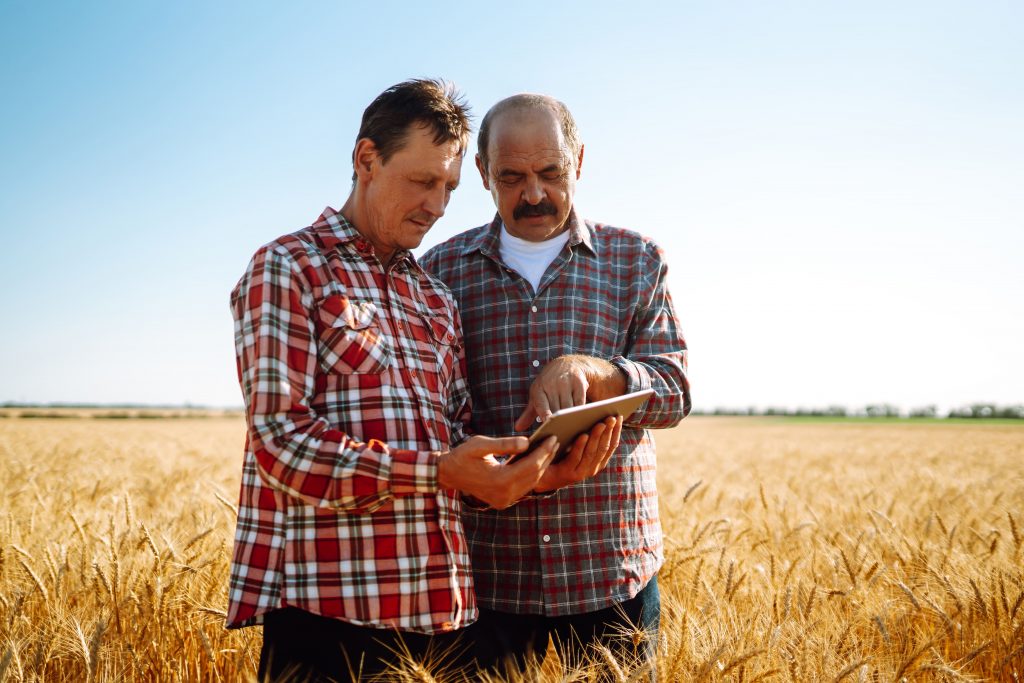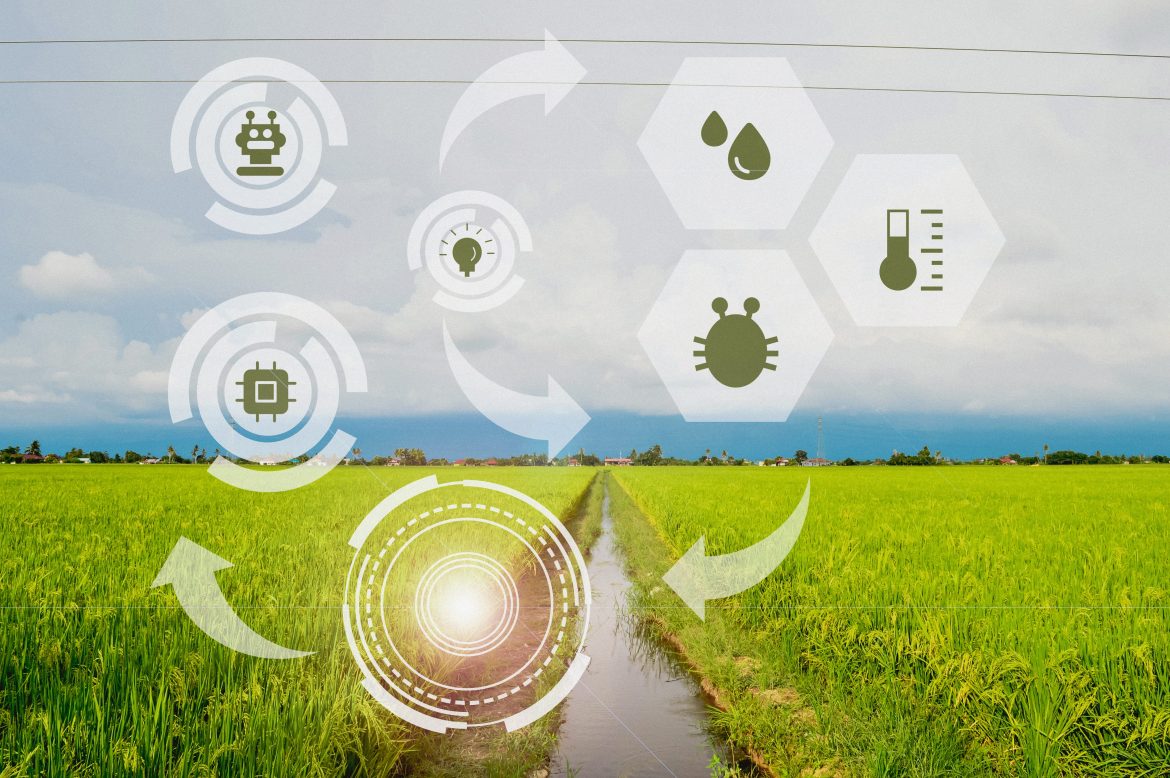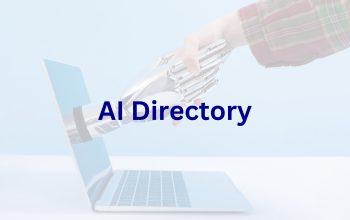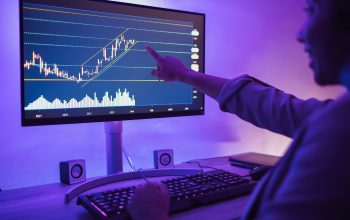Artificial tools and the Internet of Things (IoT) are revolutionizing several aspects of agriculture. We no more have to guess and labor hard. These days, a farmer could make choices based on data and enhance the operation of their farms using cameras, drones, and analytics driven by artificial intelligence.
The interesting realm of “smart agriculture,” which investigates how Internet of Things (IoT) and technology are altering farming operations, will be discussed in this paper. Every one of these technologies may be used in several ways to support the agricultural industry. We will talk about them all, from smart watering systems to precision agriculture.
What Is Smart Agriculture?
Smart agriculture, also known as precision agriculture or smart farming, is an idea that wants to change the way farming is done by using new technologies for communication, sensors that can connect to the internet of things (IoT), robots, and planning ahead. To make food grow better, crops grow more efficiently, and people work less, this new field aims to do these things.
A network of devices, such as weather stations, soil monitors, and farming drones, are linked together in smart agriculture to get real-time information about the land and crops. Then, sophisticated analytics tools and machine learning methods are used to examine this information. This information helps farmers make smart decisions and act quickly to improve the health and yield of their crops.
One of the most important parts of smart farming is AgriTech, which fixes issues in the farming business with technology. AgriTech can be used for many things, like exactly controlling watering, keeping an eye on crops, and automatically cleaning crops. It is important to keep an eye on food growing and make sure that resources like water are used well with these tools.
Another important part of smart agriculture is the use of technology. By streamlining jobs like growing, gathering, and sorting, farmers can make their businesses run better and save money on workers. There are also better foods that can be grown because of automation.

IoT And Automation In Farming
Farming is changing because of the Internet of Things (IoT) and technology, which are making farms more powerful and efficient than ever before. They are very important to the idea of precision farming, which tries to get more done with less and better use of resources.
Because they are linked, IoT devices let farmers always see what’s going on with their crops and land. We can find out about the weather, the health of the crops, and the amount of water in the land by putting monitors in the fields. Based on facts, this knowledge is used to decide what to do. Farmers can use this real-time data to change how they water their crops, find diseases early, and take other steps.
However, robots and smart tools are used in automation to make farms work better. Now, tasks like gathering, sorting, and growing can be done automatically. This saves money on workers and makes things more productive. By automating their work, farmers can be more precise, get more done, and work faster. This makes the crops better and brings in more money.
Components Of Smart Agriculture Technology
Smart agriculture technology uses different tools to make farming more efficient, produce more food, and lower prices. It is changing the farming business. IoT devices, sensors, drones, and communication technologies are used in precision farming, which is at the heart of this new idea.
There are a lot of IoT devices in smart agriculture. These devices let farmers know about the weather, their crops, and the land in real time. Putting sensors in the fields gets useful information like the soil’s temperature, amount of moisture, and nutrients. This helps farmers decide the best way to water and add nutrients to their crops. Further, these tools help farmers find early signs of diseases or pest outbreaks, which is the best way to protect their crops.
Drones are also an important part of smart farm technology. Drones with high-resolution cameras and sensors can give farmers a better view of their fields from above, making crop tracking more accurate. They can quickly find trouble spots, like crop stress or pest damage, and even help spray fertilizers or pesticides, which cuts down on the amount of work that needs to be done by hand.
A big part of making it easier for data to flow between these parts is communication tools. Farmers can receive real-time data from their IoT devices and drones through wifi networks. This lets them control and keep an eye on their farms from afar. This smooth connection makes sure that farmers can get the most up-to-date information, which helps them make smart choices and improve their farming methods.
Applications Of Smart Agriculture Technology
There are many ways that smart agriculture technology can be used to change the way farming is done. Precision farming is one important use. This method uses smart technologies to raise food yields and lower costs. This includes using GPS to carefully map and track areas so that fertilizers and chemicals can be put down in the right places.
The creation of smart cow feeds is another use of smart farm technology. These feeders have sensors that keep track of how much and what kind of food the animals are eating. Then, this information is looked at to make sure the animals get the right amount of food, which improves their health and makes them more productive.
Smart agriculture technology is also being used to help farms use water more efficiently. When soil moisture monitors are combined with weather sites, they can give farmers real-time information on the amount of wetness in the soil and the weather. This helps them decide when to water their crops and how much.
Smart farming also uses connected gadgets and real-time data collection to keep an eye on the health of crops, the weather, and the land. This lets farmers deal with problems like disease attacks or nutrition shortages before they happen, which leads to better food production.

Conclusion
In conclusion, IoT-enabled agriculture, which is also called smart farming or precision agriculture, has a lot of positive effects on the farming industry. Farmers can make up for the difference between production and the quality and amount of yield by using new technologies.
IoT-enabled agriculture changes the farming business by using technology to make farming more efficient, productive, and environmentally friendly. Traditional farming methods are being changed into smarter and more successful ones with the help of real-time data, clever operations, and better business process execution. By using these modern technology solutions, farmers can get the most out of their resources and work while still increasing production and yield.




